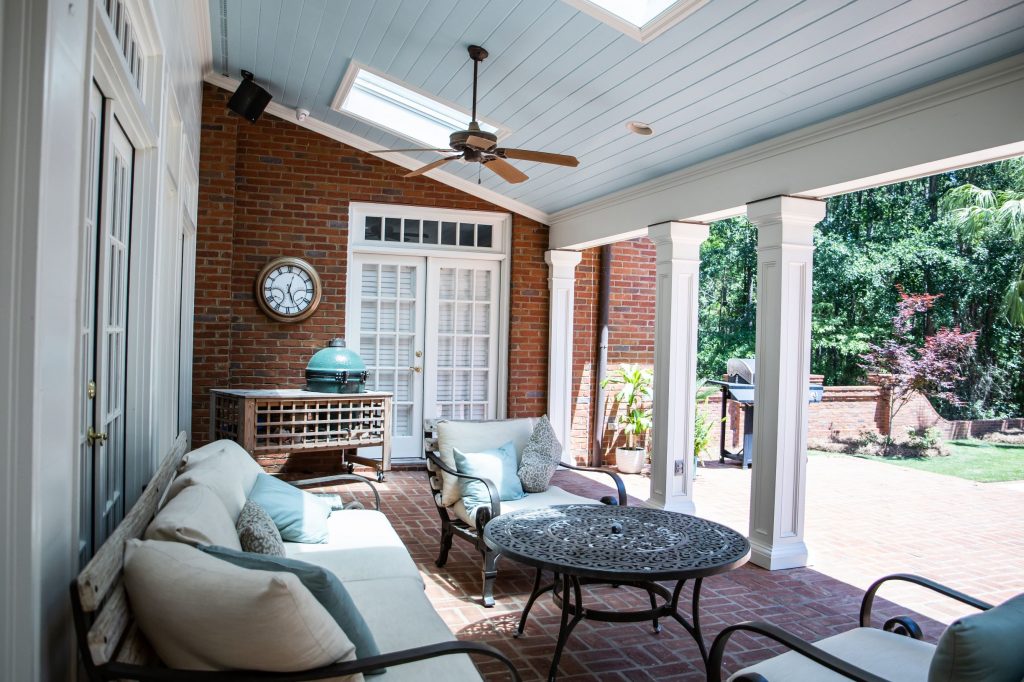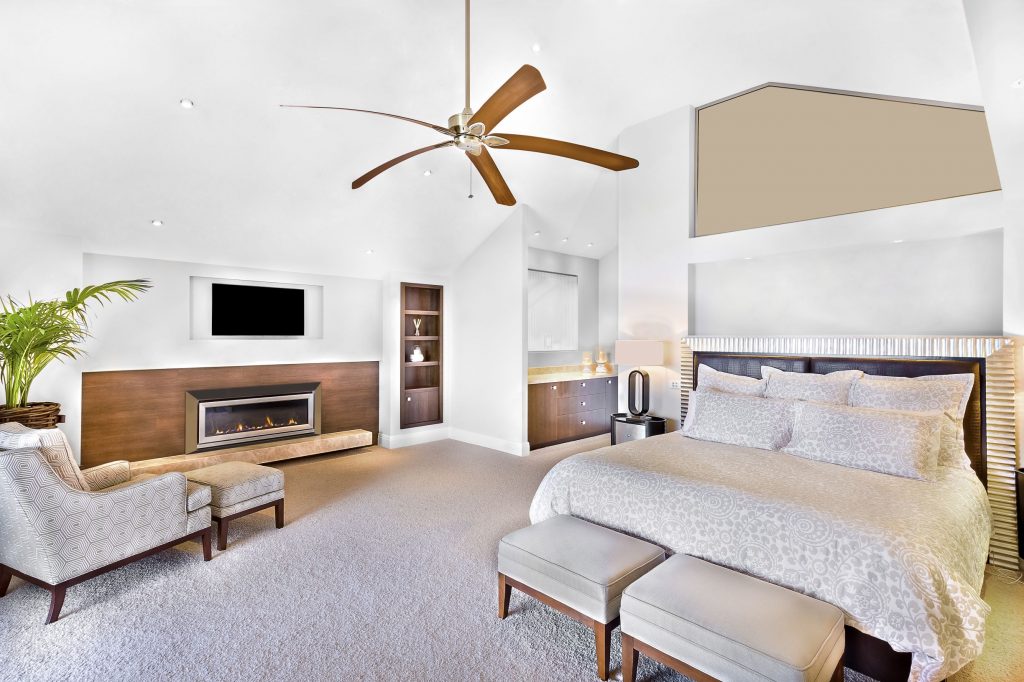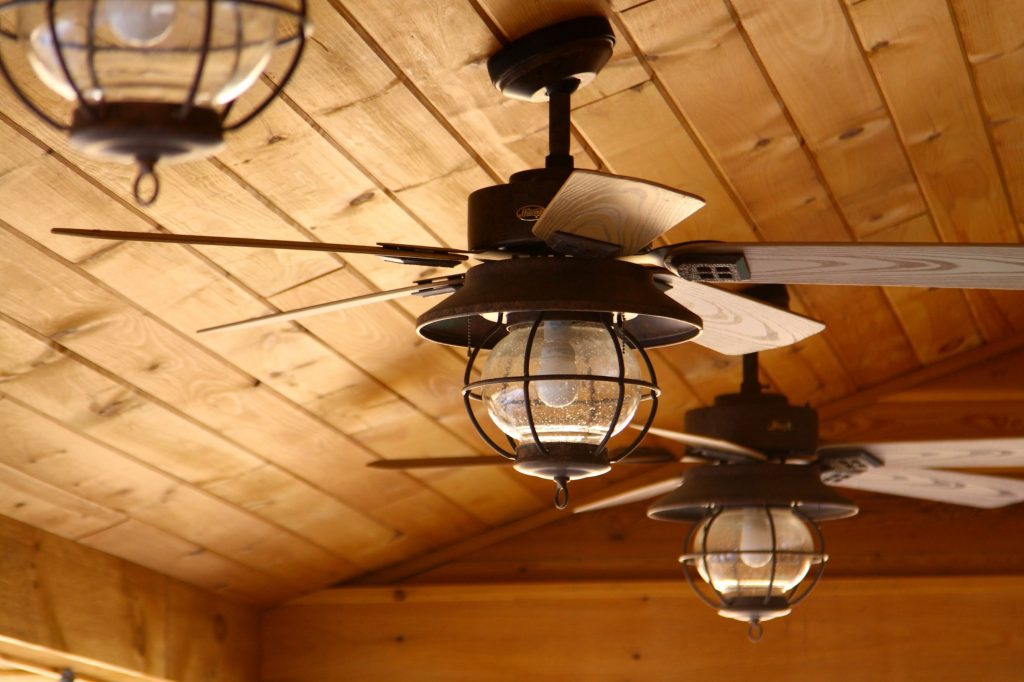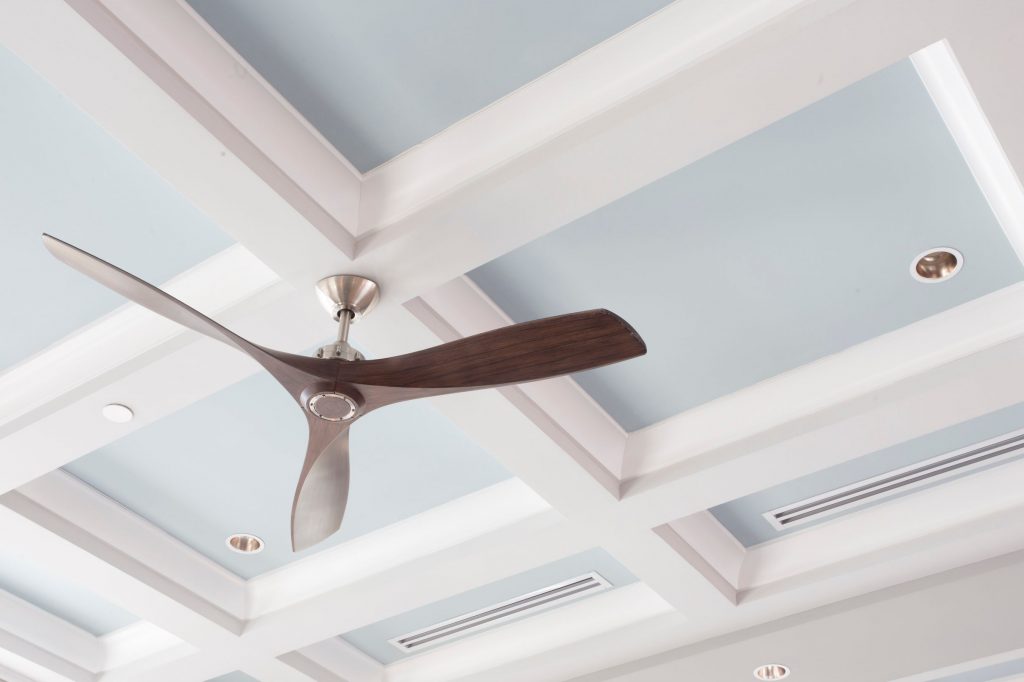
Choosing the Perfect Ceiling Fan
When carefully chosen, a unique ceiling fan will add to your home’s beauty, value, and ultimately save you money. Whether you are shopping for your first fan or you’re updating an old-fashioned relic, the process can be enough to make anyone’s head spin. Fans should be functional as well as attractive, but it’s easy to get buried in all of the expert recommendations and lighting lingo. If you give up and just pick the first fan you see that matches your room, you could be setting yourself for disappointment. Here are a few suggestions to keep in mind when searching for the perfect fan to complete your space:
Location

Before you do anything, you need to decide which areas in your home need better airflow and temperature control. Every house has a room or two that’s always hotter than the rest of the house! Also, consider putting a fan in the spaces where you entertain. When you have guests over it’s nice to be able to get the air moving to keep your guests comfortable.
Looking for outdoor fans? Pay attention to the rating. Wet rated fans have a special coating to help avoid water damage and rust. If your fan may come in direct contact with ocean spray, rain, or snow, a wet rated fan is what you need. Damp rated fans aren’t meant to come in direct contact with water, so they’re better suited to covered patio areas.
Outdoor fans can be used anywhere, but you should never hang an indoor fan outside.
Size

Once you’ve picked the perfect spot for your fan, take a look at the size of the space it needs to cool. Is it for a smaller space like a bedroom, or a larger area like a living room with vaulted ceilings? If your fan is too large, it will overpower your room and make it feel like you’re in a wind tunnel. If it’s too small, it won’t be able to move the air in the room, which will leave you disappointed.
Ceiling fans are measured by the diameter of the blades, and there are a couple of ways you can figure out which size is right for you. The first option is to measure the longest wall in the room.
| Wall Length | Fan Size |
| 12 ft or less | 36 in or less |
| 12-15 ft | 40-48 in |
| 15 ft or more | 52 in or more |
The second option is to calculate the square footage of your room. Most manufacturers have recommendations right on the box based on square footage, so you’ll definitely want to know that number!
| Square Footage | Fan Size |
| Up to 100 sq. ft. | 18” – 42” |
| 100 – 225 sq. ft. | 42” – 52” |
| 225 – 400 sq. ft. | 52” and up |
| Over 400 sq. ft. | Multiple fans |
Height

The next step is to find the perfect height to hang your fan, and it all depends on the height of your ceilings. So grab a friend and pull out that tape measure!
If you have high, vaulted, sloped ceilings, you’ll need a downrod fan. A downrod is the metal bar that separates a ceiling fan from the ceiling itself. It’s purpose is to move the fan to the sweet spot in a room where it can circulate the air the most effectively.*
| Ceiling Height | Downrod Length |
| 10 ft | 12 in |
| 11 ft | 18 in |
| 12 ft | 24 in |
| 13 ft | 36 in |
| 14 ft | 48 in |
| 15 ft | 60 in |
| 16 ft | 72 in |
*If your ceiling fan includes a light kit, reduce the length of the downrod by 12”
For more standard, 8-10 foot ceilings, you should look into a flush mount ceiling fan, often called a hugger. It does just what it sounds like: hugs the ceiling so the blades stay safely above the average person’s head.
Light Kit

Most – but not all – ceiling fans come with a light kit, making it a multi-purpose fixture. The blades circulate air and the light kit provides ambient light. If you’re replacing a light fixture with a ceiling fan, double check your fan to make sure it comes with lights so that you don’t end up in the dark!
Style

Now that you’ve laid the groundwork, you’re ready to find your fan. Ceiling fans are a lot harder to swap out that throw pillows, so it’s really important to pick out a fan that matches your style! Here are some things to consider:
1. Light shades: This is the hardware that covers the bulbs on the light kit. Some shades are clear, providing ample light, while others have a more frosted look to soften to the glow. They come in a wide variety of shapes and styles, so don’t be afraid to ask around if you don’t immediately see something you love at our showroom!. Our lighting experts can get you pointed in the right direction quickly so that you don’t have to waste hours of your life comparison shopping online!
2. Blades: Fan blades come in a variety of finishes, including black, white, natural, oak, etc. Many fans have double sided blades, so that you can try both options in your space and choose the one you like best.
3. Hardware: Fan housings and hardware typically come in metallic hues like brushed nickel, chrome, bronze, or a painted color like black or white. Take a look at the other finishings in your room – if the handles and doorknobs in your room are silver, you probably won’t want gold hardware on your fan. Similarly, a sleek fan with black blades and chrome hardware would feel out of place in a country cottage.
If you see a fan that you love but the finishes are off, don’t be afraid to ask! Many ceiling fan models are available in more than one set of finishes.
Efficiency

Did you know that an inefficient ceiling fan will cost you money on your electric bill every month? To avoid this costly mistake, consider these tips:
- Look for Energy Star rated fans. These fans can use up to 20 percent less energy, helping you reduce your energy bill.
- Think airflow. An underpowered fan will need to be left on at all times to keep a room cool. An overpowered fan will use more energy than you need. Make sure your fan is properly sized for your space.
- Change the blade direction. Nearly every ceiling fan will have a small switch near the blades that will change which direction they spin. In the summer, run your fan counterclockwise. This pushes air downwards, which creates a cool breeze in the room. In the winter, run your fan clockwise. This pulls air upwards, which pushes the warm air trapped near the ceiling back down into the room.
Finding the right fan doesn’t have to be a headache. If you follow these steps, you can feel confident in knowing that you are choosing the best ceiling fan for your room.
Come on in and see us! You can check out your new fan in person before you take it home to make sure it’s exactly what you want! And our lighting specialists are happy to help you with any step along the way, from choosing to installing the perfect ceiling fan for your home.
